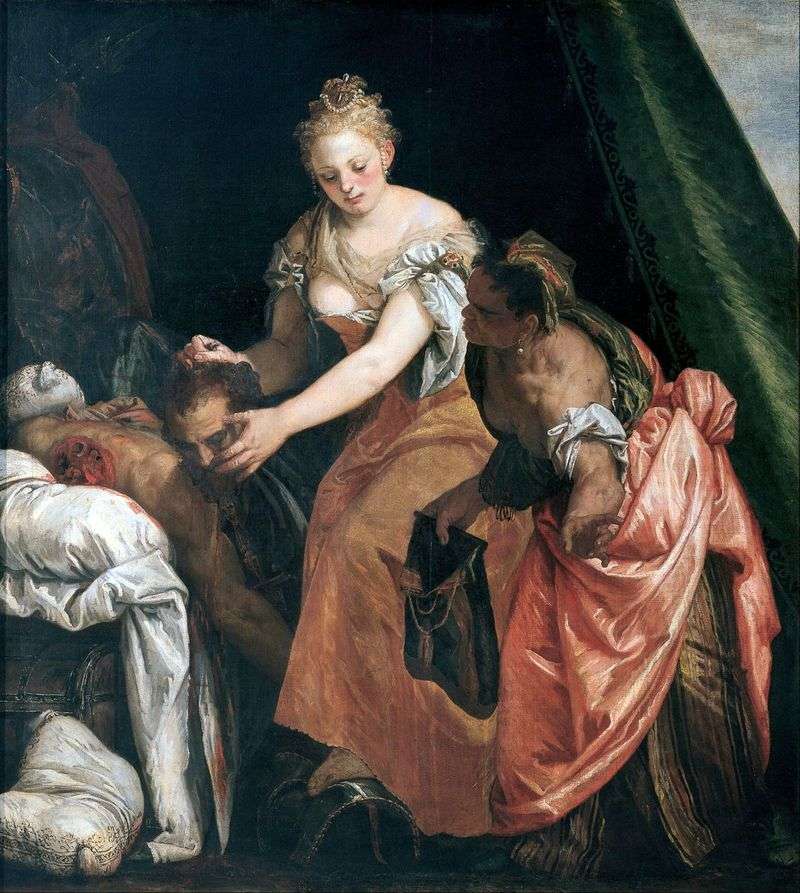
The history of Judith attracted many Renaissance artists. Veronese was no exception. From the Old Testament we know that Judith was a beautiful and pious widow. When the Assyrian commander of Holofernes besieged her hometown and dried up the water, Judith left the city with her servant and a basket of provisions and went to the camp of the enemy. She announced to Holoferna that she was ready to help him take over the city.
The military commander, flaming with passion for the Jew, arranged a magnificent feast for her. When, after the feast, they were left alone, Judith cut off Holofern’s head with his own sword. She put it in her basket and went back to the city with her maid. The morning of the Assyrian commander’s head was exposed on the city walls. This disconcerted the enemy army, and it, driven by the city militia, fled to Damascus. In the 1580s, Veronese wrote two paintings dedicated to this story and “Judith and Holofernes”).
Both of them show us Judith, who has just killed Holofernes and is about to hand his head to his maid. The savior of the city appears before the audience a young blond woman dressed in the Venetian fashion of the XVI century. The whiteness of her skin is remarkably highlighted by the dark background.
 Judith Beheading Holofernes by Caravaggio
Judith Beheading Holofernes by Caravaggio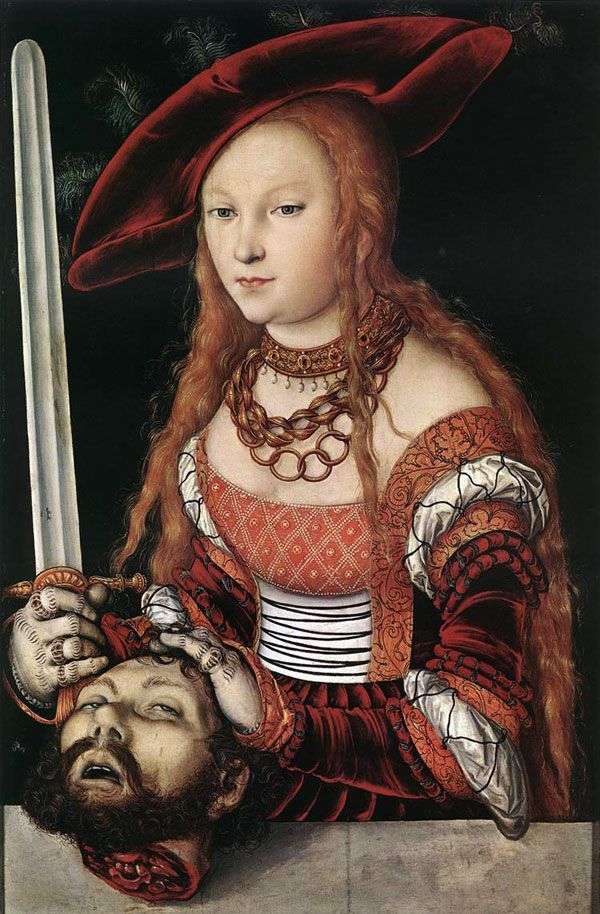 Judith with the head of Holofernes by Lucas Cranach
Judith with the head of Holofernes by Lucas Cranach Judith, killing Holofernes by Michelangelo Merisi da Caravaggio
Judith, killing Holofernes by Michelangelo Merisi da Caravaggio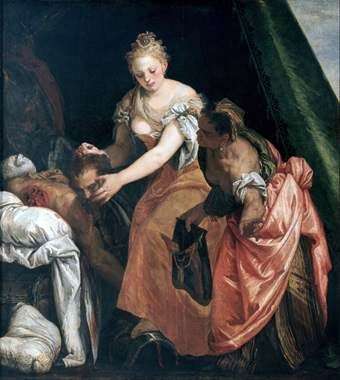 El asesinato de Holofernes – Paolo Veronese
El asesinato de Holofernes – Paolo Veronese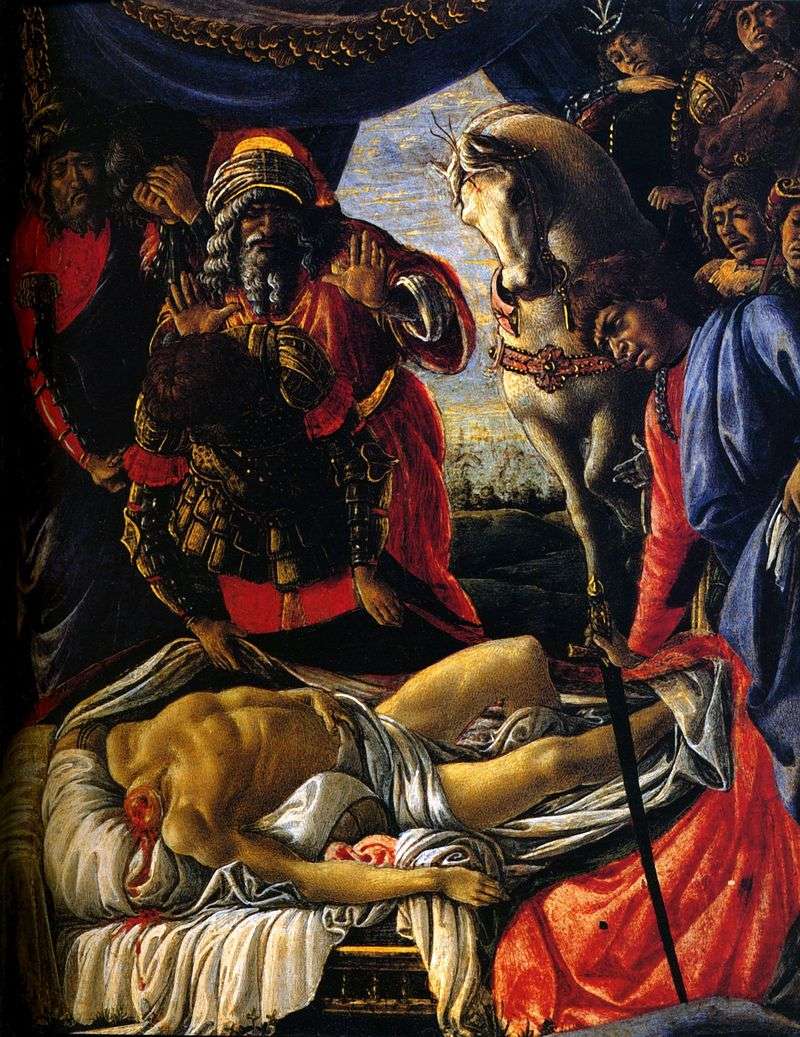 Finding the body of Holofernes by Sandro Botticelli
Finding the body of Holofernes by Sandro Botticelli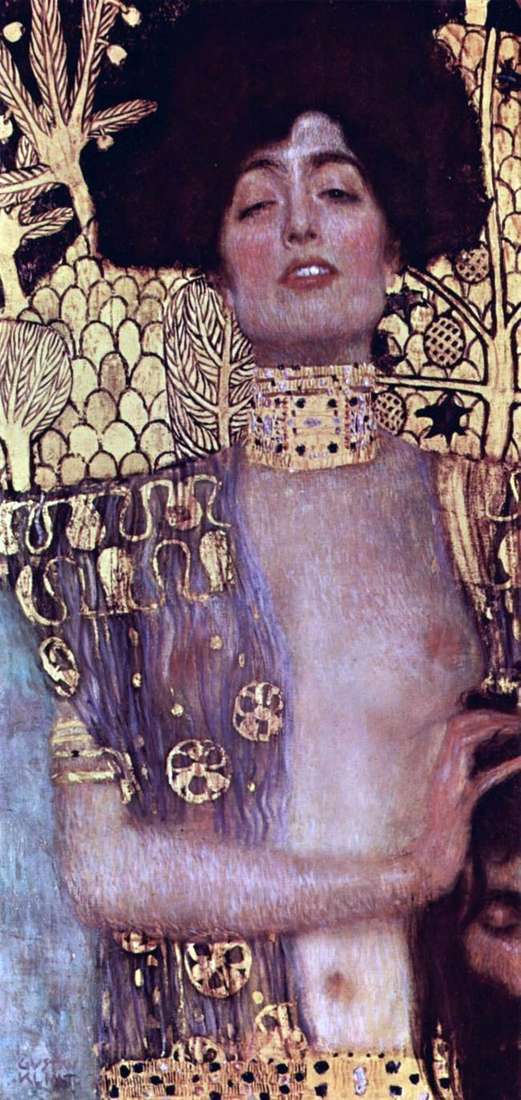 Judith and the Head of Holofernes by Gustav Klimt
Judith and the Head of Holofernes by Gustav Klimt Judith decapitant Holofernes by Artemisia Gentileski
Judith decapitant Holofernes by Artemisia Gentileski Judith with the head of Holofernes by Cristofano Allori
Judith with the head of Holofernes by Cristofano Allori